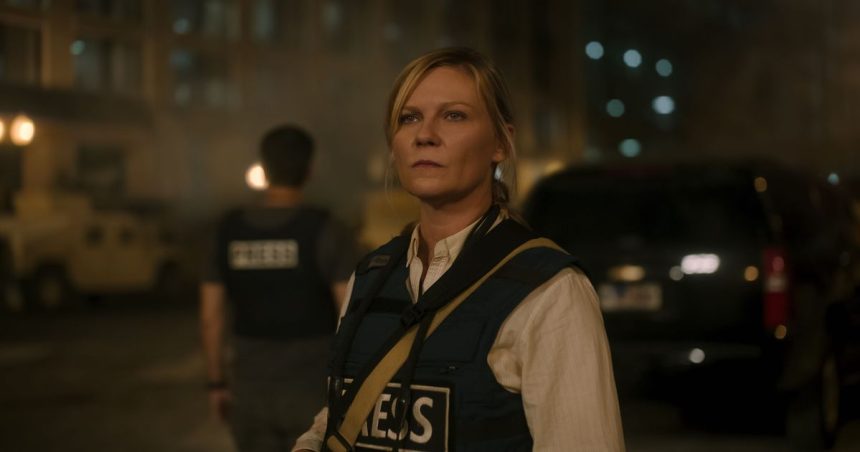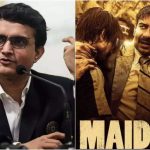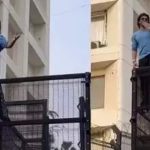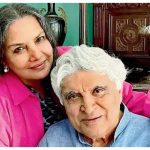Garland needed Tyler Perry’s 330-acre studio, a Navy SEAL, and a dry sense of humor.
Photo: A24
This piece contains spoilers about Civil War, including its ending.
Many of the questions raised at the start of Civil War remain unanswered by its end, namely “how?” and “why?” In depicting a near-future United States ravaged by sectarianism, Alex Garland’s feature-length alarm bell borrows from the dystopian playbook that Roland Emmerich and other filmmakers return to — but unlike those sci-fi counterparts, Garland’s backstory is only legible in bits and pieces. Even the cast and crew say they weren’t told what led to the movie’s authoritarian third-term president (Nick Offerman), who has disbanded the FBI and unleashed air strikes on his own citizens, and now aims to stamp out the so-called Western Forces, Texas and California’s “illegal” secessionist movement.
Despite wanting an ambiguous political backdrop that avoids talk of Republicans and Democrats, Garland knew from the outset how Civil War would end: with insurgents executing the president in the Oval Office. He had a premise — “America has disintegrated into a state of civil war,” as Garland describes it today — and an outcome, which he reverse-engineered to focus on four journalists traveling by van from New York City to Washington, D.C., in hopes of questioning a president who hasn’t spoken to the press in 14 months. Eventually, Garland devised a climactic 20-minute battle that erupts as the group arrives in the capital city one day after the president’s generals have surrendered. Outside the White House, Humvees roll in, helicopters circle overhead, the Lincoln Memorial and other structures explode, and snipers open fire.
“What I see happening in the film is more like a traditional concept of anarchy, which is not chaos — it’s multiple autonomous groups working at once,” Garland says. In addition to the Western Forces guerrillas closing in on Pennsylvania Avenue, an unnamed faction brands itself with pink, green, and turquoise stripes. There’s also the president’s militaristic supporters and various loose-knit blocs stationed throughout the country. The protagonists — photographers Lee (Kirsten Dunst) and Jessie (Cailee Spaeny), and reporters Joel (Wagner Moura) and Sammy (Stephen McKinley Henderson) — document it all in what is part higher calling and part adrenaline addiction.
Garland shot Civil War in sequence, so the intensity the actors absorbed was constantly mounting. By the climax, “you’ve reached a moment where dialogue almost becomes irrelevant,” says cinematographer Rob Hardy, who has worked on all of Garland’s projects. “In a strange way, I compared it to the last 20 minutes of Annihilation because it’s almost doing the same thing,” he adds. “There’s a laser focus on where they are heading and what they need to do. They’re stepping over the line and going into a space where anything could happen, but the juxtaposition is that the space is familiar. It was important to really throw the audience into that tension.”
Parts of the battle unfolded at Tyler Perry’s 330-acre studio in Atlanta, which contains a replica of the White House. Other sections, like the 30-foot-tall makeshift barrier surrounding the mansion, were constructed in nearby Stone Mountain, and certain façades were embellished using blue screens and CGI. After dispatching the visual-effects department to measure actual D.C. buildings and streets, production designer Caty Maxey built a scale model that she, Garland, and stunt coordinator Jeff Dashnaw used to map out the sequence so various sets could be stitched together seamlessly. That meticulous preparation, replete with toy cars, allowed them to stage many of the explosions and shoot-outs practically. Maxey got chills when she saw real bullet holes in a limousine meant to dupe eyewitnesses into thinking the president had fled the White House.
Alex Garland on the set of Civil War.
Photo: A24
“It’s a dangerous work environment because you have tanks and Humvees,” Garland says. “Sometimes the Humvees are moving very quickly, and there are flows of people that are supposed to start moving when the Humvee shoots past them. Quite often, people take their cues off something else, and then everything gets slightly out of order — someone starts running earlier than they should, and now they’re in the path of the Humvee. We have guns firing blanks, which means they have a muzzle flash, which makes the same kind of noise. If you’re in front of one of those things, you’d get really badly hurt. You might have half of your face blown off. So it’s a strange environment, and very, very carefully planned.”
Garland recruited former Navy SEAL Ray Mendoza, who has also advised on The Terminal List and the Mark Wahlberg war movie Lone Survivor, to help choreograph the battleground action. Mendoza hired other veterans to play extras, and Garland encouraged the principal actors not to worry about where the cameras were placed so they could move about as naturalistically as possible.
When Lee realizes the president’s supposed evacuation is merely a diversion, she makes her way into the White House alongside Jessie, Joel, and a few bossy Western Forces commandos wearing camo. (Sammy has been killed by the time they get to D.C.) Inside, Maxey and her team created an immediate sense of disarray. Dead bodies, weapon cases, containers of half-eaten takeout food, and paperwork are strewn throughout the entrance hall, conveying the longevity and ferocity of the conflict. “We wanted to show that people had been living here under pretty harsh circumstances to protect the president,” Maxey says.
As Lee, Jessie, and Joel inch toward the Oval Office, it becomes clearer, albeit subtly, that this is not the White House of yesteryear. The walls feature few presidential portraits. A chandelier fit for a king now hangs near the Resolute desk. Windows are covered by grates or boarded up, evidence of a building under siege. When Jessie steps forward to snap a photo in the red-carpeted hallway, Lee — once a reluctant mentor — leaps out to take the bullet heading toward her. It’s a reversal of an earlier scene in which Lee coldly insinuated that she would photograph Jessie’s death if she witnessed it. Realizing her idol has been shot on her behalf, Jessie lifts her camera and does the same, hardening in real time to the horrors of wartime photojournalism. “It really is the key moment, and everything about the finale was kind of born out of that idea,” Hardy says.
That leaves only Joel and Jessie to encounter the president, who is cowering on the floor as the Western Forces infiltrate his office. Joel halts the soldiers pointing guns at the president’s face to demand a quote. “Don’t let them kill me,” he pants, to which Joel cooly responds, “Yeah. That’ll do.” It’s something of a punch line: the almighty autocrat begging a journalist he’d recently treated as an enemy to save his life. As the electropunk duo Suicide’s buoyant “Dream Baby Dream” kicks off the end credits, Jessie’s final image from the film fills the screen, showing four soldiers encircling the president’s corpse. They’re grinning like they’ve just won a game. The picture reads as a slight wink: No one can resist a good photo op.
“I have a dry sense of humor, and I think at that moment there is something dry happening, but also something real,” Garland says. “There are many photos that exist — it could be law enforcement, but I think you particularly get it with military — where they kill someone they’ve been trying to get and then they take that photo. There’s a famous one from when Pablo Escobar was shot. So, like many other things in the film, it was a commentary on things that actually happen.”












